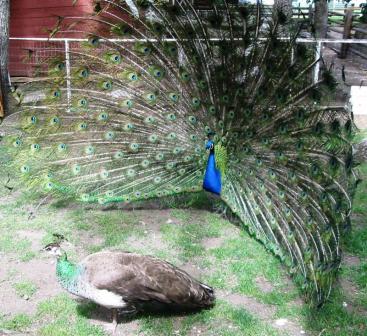2 Timothy 4:3-4
“For the time will come when they will not endure sound doctrine but according to their own desires, because they have itching ears, they will heap up for themselves teachers; and they will turn their ears away from the truth, and be turned aside to fables.”
Parables are a good way to teach. Jesus often used parables to teach a lesson. Parables can even be a good way to teach science. However, parables cannot be used to establish scientific fact.
 Unfortunately, Charles Darwin frequently used parables as part of his scientific method. Many modern evolutionists continue that tradition. Let’s look at an example. Those who believe in evolution have tried to find an explanation for why some birds have luxurious, bright plumage. Does the peacock really need those brilliant tail feathers? Well, say evolutionists, females prefer the males with the most beautiful plumage. So the brightest males had more babies. Evolutionists call this sexual selection.
Unfortunately, Charles Darwin frequently used parables as part of his scientific method. Many modern evolutionists continue that tradition. Let’s look at an example. Those who believe in evolution have tried to find an explanation for why some birds have luxurious, bright plumage. Does the peacock really need those brilliant tail feathers? Well, say evolutionists, females prefer the males with the most beautiful plumage. So the brightest males had more babies. Evolutionists call this sexual selection.
However, what does the story prove? It doesn’t prove anything in the scientific sense. It doesn’t explain where the colors came from in the first place. It doesn’t explain why females prefer showy males. Nor does it explain where peacocks originally came from. And it doesn’t explain why some birds have very drab colors. However, the biggest problem with this explanation is that it begs the question. You see, many evolutionists admit that they have no good explanation for how sexual reproduction evolved in the first place.
So the evolutionists’ story for how the peacock came to have such bright feathers is just a story – not scientific proof. And when it comes to stories, we prefer the stories reported in the Bible because thy have our Creator’s own personal guarantee of truth.
Prayer:
I pray, dear Father, that You would give me a clear-thinking critical mind informed by Your Word. Help me use these abilities to clearly see the errors of the world’s thinking and better appreciate Your wisdom. In Jesus’ Name. Amen.
Notes:
